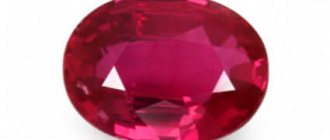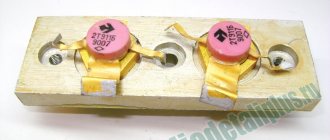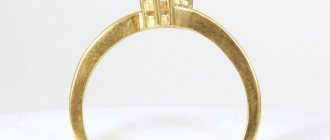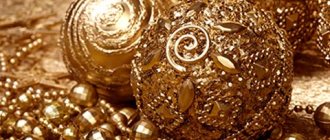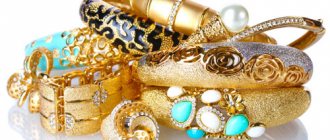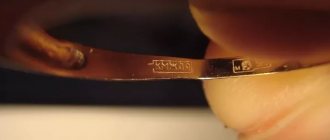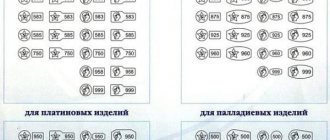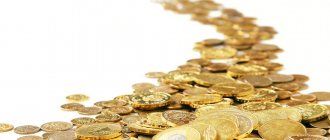Lost Gold
By 1914, the gold reserves of the Russian Empire amounted to 1 billion 100 million rubles and were the largest in the world. During the First World War, the country's government decided to play it safe and transported half of the stock to Kazan.
After the October Revolution, the Bolsheviks managed to take out 100 boxes of gold. The rest of the gold, worth 650 million rubles (490 tons), went to the whites. For about a year the gold was in Omsk, the capital of the White Guard movement. In 1919, during the retreat of the whites, it was transported along the Trans-Siberian Railway to the East. The train consisted of 40 cars.
The train with the gold reserves reached Nizhneudinsk. Here the Czechs forced Kolchak to surrender to the Socialist Revolutionaries, who subsequently handed him over to the Bolsheviks. Gold also fell into the hands of the new government. Thus, the Czechs paid off the Bolsheviks and returned home freely from encirclement.
Women's professions: why men find it difficult to get a job because of female dominance
A friend of Ekaterina Gradova told who the actress was secretly in love with
The head of Rospotrebnadzor compared the situation with coronavirus in Russia and in the world
However, out of 650 million rubles, only a little more than 400 million fell into the hands of the Soviets. A total of 235.6 million rubles worth of gold was lost. Instead of gold bars, bricks and stones were found in some of the boxes on the train. There are many myths about where some of Kolchak’s gold went.
How much could you earn in a year, 2, 5 and 10 years?
Owning a ton of gold in itself, in addition to satisfying one’s pride, also brings real profit. Gold is a currency. Its simple storage as a reserve “for a rainy day” is used as a safe haven asset, because the metal is liquid in any situation (war, change of political system, economic crisis).
With a starting price at the time of writing of 1 troy ounce of $1,227.10 USD (and one troy ounce contains 31.1035 grams), a ton is estimated at 39,452,151 in US dollars, or 2,641,321,555 in rubles (slightly more than 2.5 billion).
Price dynamics charts show that:
- Over the year (2017-2018), the price of a troy ton decreased from $40,992,171 to $39,448,936 (-$1,543,234).
- Over the course of 2 years, it increased from 36,233,864 to 39,448,936, that is, by $3,215,072.
- In 5 years it has remained virtually unchanged.
- The lucky owners of a ton, who owned it 10 years ago (in December 2008), today, having sold all the available metal, would become 1.4 times richer. That is, their passive income would be $15,779,574.
Version one: Czechs
According to some researchers, Kolchak’s Czech allies could have taken the missing part of the gold reserves home with them. This version is supported by the fact that soon after the Czech troops returned home, a new bank was created in the Czech Republic - Legiabank. Also, the Czechs suspiciously generously helped white emigrants who settled in their country after the revolution. Former Deputy Minister of Finance of the Kolchak government, Vladimir Novitsky, directly accused the Czechs of stealing 63 million rubles.
About mass
Now let's look at how much a bank gold bar weighs. Attention will be paid to measured objects, because they are objects of investment that are available to citizens with free funds. At the same time, they can be purchased at any banking institution that offers transactions with precious metals. So what do they offer by weight? If you go by Sberbank, you can buy 1, 5, 10, 20, 50, 100, 250, 500 and 1000 grams. Moreover, they will be either in standard or gift packaging. A feature of the second is increased strength, as well as a lower denomination available for purchase - a maximum of 50 grams. After acquisition, gold bars can be easily transferred to a third party, sold to a bank, or kept in a safe at home (if someone takes the risk).
Version two: military spending
Some sources mention that Kolchak treated his gold reserves with care and did not allow anything to be spent. However, in reality, according to many researchers, everything was completely different. The White Army needed weapons and uniforms.
According to historian Vladislav Kokulin, for example, part of the gold in 1919 was transferred to Japanese, American and French banks in exchange for weapons.
So, the price of 1 kilogram of gold is approximately 1,850,000 Russian rubles
In dollar equivalent, this will be $36,865. On the world gold market, quotes are formed largely based on the results of daily speculative transactions. At the same time, experts try to link the cost of gold with the amount of precious metal actually mined and produced. But there is no direct relationship observed here. There is only an increasing fall and winter demand associated with the traditional Asian wedding season.
Clearer patterns are observed in the foreign exchange market. The chaotic nature of this segment of the financial system forces many investors to turn to gold, which is more stable in the long term. And many experts explain today’s rise in prices for the yellow metal by the fall in the exchange rate of the US dollar. People stop trusting unstable currencies and turn their attention to gold.
Version three: theft at Tyret station
The third version of where the missing part of Kolchak’s gold may currently be located is the most attractive for treasure hunters. Some researchers believe that some of the boxes with gold simply did not reach Irkutsk and were stolen by the train guards.
Natalya Bochkareva told what she thinks about plastic surgery
Scientists will send probes to explore the underground world of the Moon
The only one who managed to win the heart of the handsome Alexander Panayotov
For example, there is a legend that in front of the Tyret station, 13 boxes with 500 kg of gold disappeared from the train. Several security guards were accused of theft. And some researchers believe that the guards could have managed to bury some of the stolen goods somewhere in the area of the station or hide it in nearby salt mines.
Where can you buy or sell
For most citizens, buying gold involves visiting a jewelry store. But it’s unrealistic to buy a ton of it. And what is sold in them is not currency. A gram of the product contains from 375 to 585 (583) or 750 parts of precious metal, 958 in dentures. The currency is pure gold with a purity of at least 999.
This metal is not used for making jewelry: it is too soft. But only pure aurum is used in bars and coins.
On MICEX
Any individual can purchase gold on the Moscow exchange, but there are a number of difficulties.
The minimum lot size is 10 grams. That is, you won’t be able to buy 1 gram, but you can buy a ton! Provided that you can subsequently prove to the tax authorities the legality of the origin of the funds that you spent on such a purchase.
Expert opinion
Lyudmila Pestereva
Our most experienced gold investor
Ask a Question
An individual does not become the real owner of a piece of gold in Russia. An unallocated metal account is opened for him at the National Clearing Center (NCC), and the accounting of the precious metal belonging to a particular investor is maintained by NCO CJSC NSD. Physically purchased gold is stored in the safe of the Central Bank of the Russian Federation. You become only the nominal owner of the precious metal.
In the future, it will be possible to sell the right to own the asset, receiving in return funds in any currency at the current rate.
Coins or bars in a jar
If the shine of a precious metal is too attractive and you long to possess it in kind, the easiest way to realize your dream is to purchase coins or bars (minimum bar - 10 g) in a jar. To do this, just select the size of the bar or coin that suits you and pay the current price according to the quotes.
A piece of metal can be given to you or left in storage in a bank safe deposit box. In return, a certificate is issued, which is also a means of payment. By presenting it, you can make any commodity or currency transaction.
Compulsory medical insurance
An impersonal metal account is a method of virtual ownership of precious metal, similar to trading on the MICEX. That is, by purchasing a certain amount of gold in compulsory medical insurance, you do not become its real owner, but only receive a record of ownership. Based on this record, you can make purchase and sale transactions.
Please note that when selling metal that you own, you are required to independently calculate personal income tax, file a tax return and pay sales tax.
Mutual Fund or ETF
It is impossible to purchase real precious metal either in a mutual fund or ETF. Only the right to own a share of the fund's assets expressed in gold equivalent is acquired.
Also watch the video interview below:
Version four: Kholmushinsky caves
There is also an opinion that the gold was hidden in a cache near Irkutsk on the Belaya River in the Kholmushinsky caves. The gold, according to legend, was stolen by two captains, who shot the soldiers involved in transporting the stolen goods. One of the local residents told how in the 50s, as a child, he climbed into one of the caves, where he saw skeletons and some boxes, but out of fear he did not examine anything.
What types of ingots are there?
There are two main varieties:
- Measuring ingots. Their weight is no more than one kilogram. Manufactured for subsequent sale to individuals and legal entities. There are GOST standards regulating the classification of products into this class. Thus, the ingot must be made in the shape of a truncated pyramid or in the form of a parallelepiped. The front side must contain clear alphabetic and numerical markings of the product. It is permissible to have the creator's logo, which is indicated on the reverse side. The product should be smooth and shiny. Stains, cracks, chips and scratches are grounds for replacing the product. Although a convex, concave or slightly wavy surface is considered acceptable. This is due to the fact that over time the metal undergoes shrinkage and crystallization processes.
- Standard ingots. They are necessary for the production of measured ones. Not on sale. In fact, they are a guideline for the smelting of measured ingots; they do not fulfill any other goals or tasks. These products are also subject to GOST standards. According to him, they should have the shape of a truncated pyramid. The metal grade, weight, number, year, hallmark and manufacturer's logo are clearly marked in the upper part. There should be no chips, scratches or stains on the surface of the ingot. It must be smooth. The depressions should not exceed half a centimeter.
They also differ in manufacturing technology. Highlight:
- Stamped ingots. They weigh no more than 0.5 kilograms.
- Cast ingots. Weight more than 0.5 kilograms.
Specific points
Now let's talk about some details. First of all, about standard ingots. If they are mass-produced, their weight does not exceed 13.5 kilograms. There may be large values, but this is an exception. Most ingots produced range from 10 to 13.5 kg. It is also necessary to note the difference in the measurement of masses. For example, in our country it is customary to use a unified measurement system based on the gram. But if you go to an international stock exchange, for example the London one, then the precious metal will probably be measured in troy ounces.
